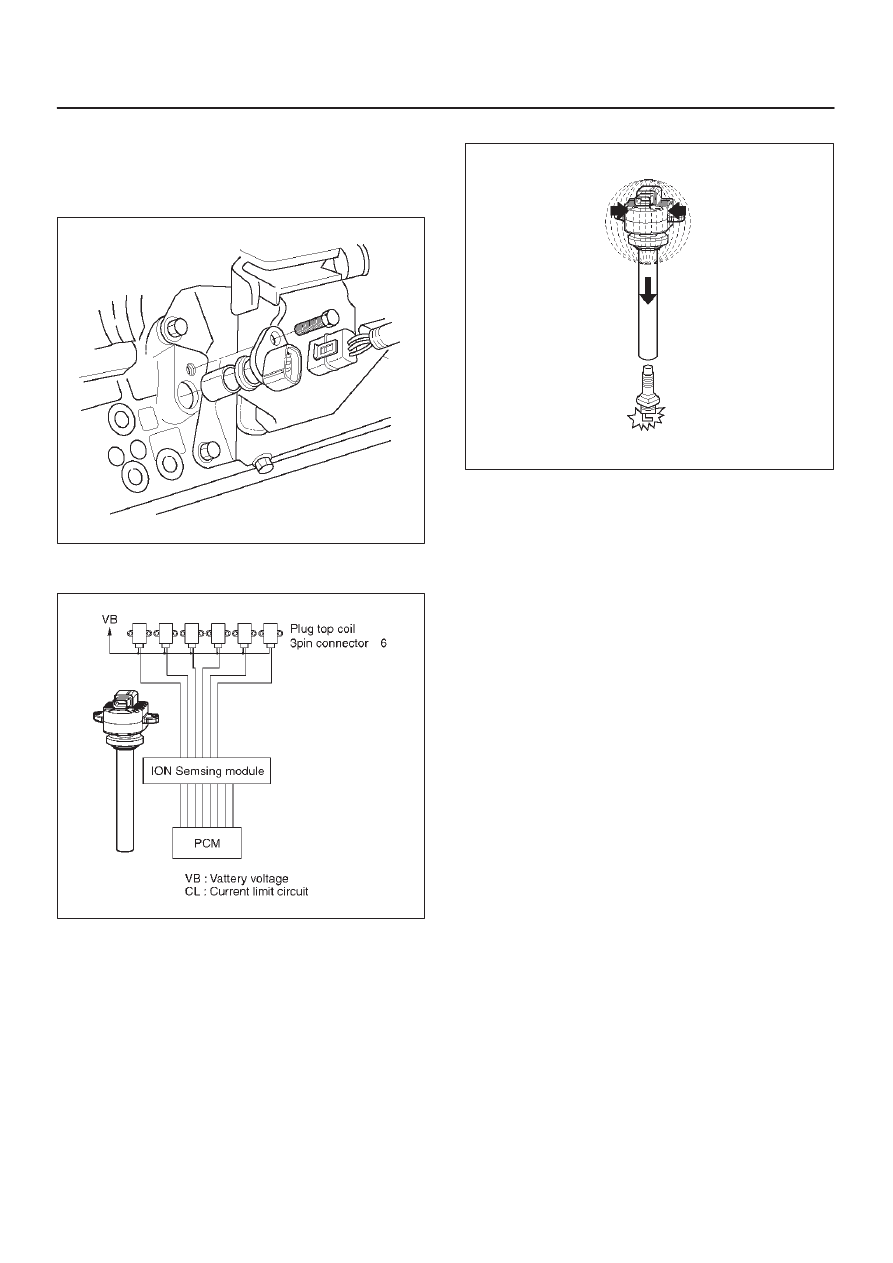Content .. 1529 1530 1531 1532 ..
Isuzu Amigo / Axiom / Trooper / Rodeo / VehiCross. Manual - part 1531

6E2–575
RODEO 6VD1 3.2L ENGINE DRIVEABILITY AND EMISSIONS
D
Vehicle speed (vehicle speed sensor).
D
PCM and ignition system supply voltage.
D
The crankshaft position (CKP) sensor sends the PCM
a 58X signal related to the exact position of the
crankshaft.
TS22909
Based on these sensor signals and engine load
information, the PCM sends 5V to each ignition coil.
060RY00116
This module has the function to energize and de-energize
the primary ignition coil in response to signals from the
PCM. The Throttle PCM controls ignition timing and dwell
time.
Continuity and out-or-range value check:
This diagnosis detects open circuit or short-circuiting in
the Electronic Spark Timing (EST) line by monitoring EST
signals. A failure determination is made when the signal
voltage remains higher or lower than the threshold for
corresponding fault code beyond a predetermined time
period.
Diagnosis enabling conditions are as follows:
D
RPM is higher than the specified threshold.
D
EST line is enabled.
060RY00029
Ignition Control PCM Output
The PCM provides a zero volt (actually about 100 mV to
200 mV) or a 5-volt output signal to the ignition control (IC)
module. Each spark plug has its own primary and
secondary ignition coil assembly (”coil-at-plug”) located
at the spark plug itself. When the ignition coil receives the
5-volt signal from the PCM, it provides a ground path for
the B+ supply to the primary side of the coil-at -plug
module. When the PCM shuts off the 5-volt signal to the
ION sensing module, the ground path for the primary coil
is broken. The magnetic field collapses and induces a
high voltage secondary impulse which fires the spark plug
and ignites the air/fuel mixture.
The circuit between the PCM and the ignition coil is
monitored for open circuits, shorts to voltage, and shorts
to ground. If the PCM detects one of these events, it will
set one of the following DTCs:
D
P0351: Ignition coil Fault on Cylinder #1
D
P0352: Ignition coil Fault on Cylinder #2
D
P0353: Ignition coil Fault on Cylinder #3
D
P0354: Ignition coil Fault on Cylinder #4
D
P0355: Ignition coil Fault on Cylinder #5
D
P0356: Ignition coil Fault on Cylinder #6
Powertrain Control Module (PCM)
The PCM is responsible for maintaining proper spark and
fuel injection timing for all driving conditions. To provide
optimum driveability and emissions, the PCM monitors
the input signals from the following components in order
to calculate spark timing:
D
Engine coolant temperature (ECT) sensor.
D
Intake air temperature (IAT) sensor.
D
Mass air flow (MAF) sensor.
D
PRNDL input from transmission range switch.
D
Throttle position (TP) sensor.
D
Vehicle speed sensor (VSS) .